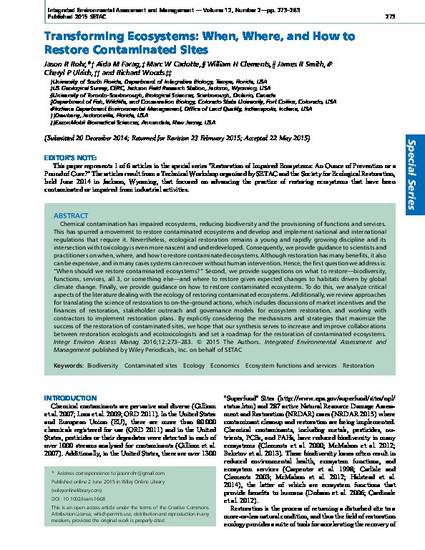
- Biodiversity,
- Contaminated sites,
- Ecology,
- Economics,
- Ecosystem functions and services,
- Restoration
Chemical contamination has impaired ecosystems, reducing biodiversity and the provisioning of functions and services. This has spurred a movement to restore contaminated ecosystems and develop and implement national and international regulations that require it. Nevertheless, ecological restoration remains a young and rapidly growing discipline and its intersection with toxicology is even more nascent and underdeveloped. Consequently, we provide guidance to scientists and practitioners on when, where, and how to restore contaminated ecosystems. Although restoration has many benefits, it also can be expensive, and in many cases systems can recover without human intervention. Hence, the first question we address is: "When should we restore contaminated ecosystems?" Second, we provide suggestions on what to restore-biodiversity, functions, services, all 3, or something else--and where to restore given expected changes to habitats driven by global climate change. Finally, we provide guidance on how to restore contaminated ecosystems. To do this, we analyze critical aspects of the literature dealing with the ecology of restoring contaminated ecosystems. Additionally, we review approaches for translating the science of restoration to on-the-ground actions, which includes discussions of market incentives and the finances of restoration, stakeholder outreach and governance models for ecosystem restoration, and working with contractors to implement restoration plans. By explicitly considering the mechanisms and strategies that maximize the success of the restoration of contaminated sites, we hope that our synthesis serves to increase and improve collaborations between restoration ecologists and ecotoxicologists and set a roadmap for the restoration of contaminated ecosystems.
Integrated Environmental Assessment and Management, v. 12, issue 2, p. 273-283
© 2015 The Authors. Integrated Environmental Assessment and Management published by Wiley Periodicals, Inc. on behalf of SETAC
Available at: http://works.bepress.com/jason_rohr/20/
